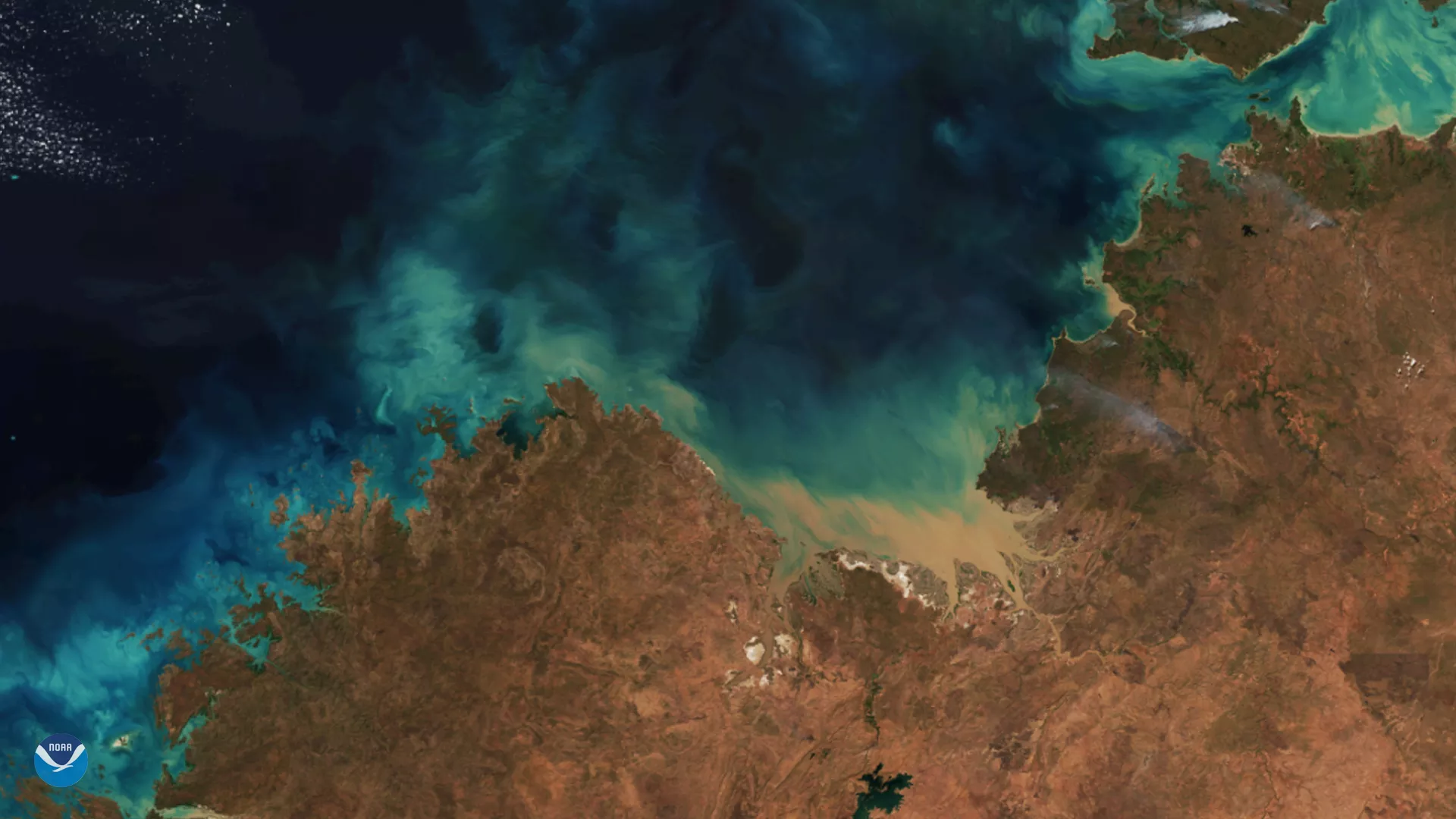
Clear skies over Australia's northwest coast reveal a magnificent pattern of blue and green sediment swirling in the waters of the Timor Sea. This image, captured by the NOAA-20 satellite on June 18, 2018, shows the jagged coastline of northwestern Australia, as well as a large area of tan-colored sediment at the mouth of the Victoria River. Brighter colored waters appear near the shore, where rivers carry dirt and dust from Australia's interior into the ocean. As the sediment disperses, the water fades from bright turquoise to darker blue.
The radiant blue colors in the lower left may also come from phytoplankton, tiny plant-like organisms that thrive in nutrient-rich ocean waters. Phytoplankton blooms often occur when surface currents pull deeper, colder, and nutrient-rich water to the surface, a process known as upwelling. NOAA data show that sea surface temperatures have been cooler than normal along Australia's northwest coast in recent weeks, offering evidence that phytoplankton are enhancing the turquoise-colored swirls seen in this imagery.
In addition to the sediment and phytoplankton, we can also see smoke from an active wildfire in the upper right corner of the image. This wildfire is located on Melville Island, about 50 miles north of the city of Darwin.
This enhanced true-color satellite imagery is not a simple photograph of Earth, but rather a composite image. It was created by combining data from the three color channels on the NOAA-20 satellite's VIIRS sensor, sensitive to the red, green and blue (or RGB) wavelengths of light. In addition, data from several other channels are often also included to cancel out or correct atmospheric interference that may blur parts of the image.